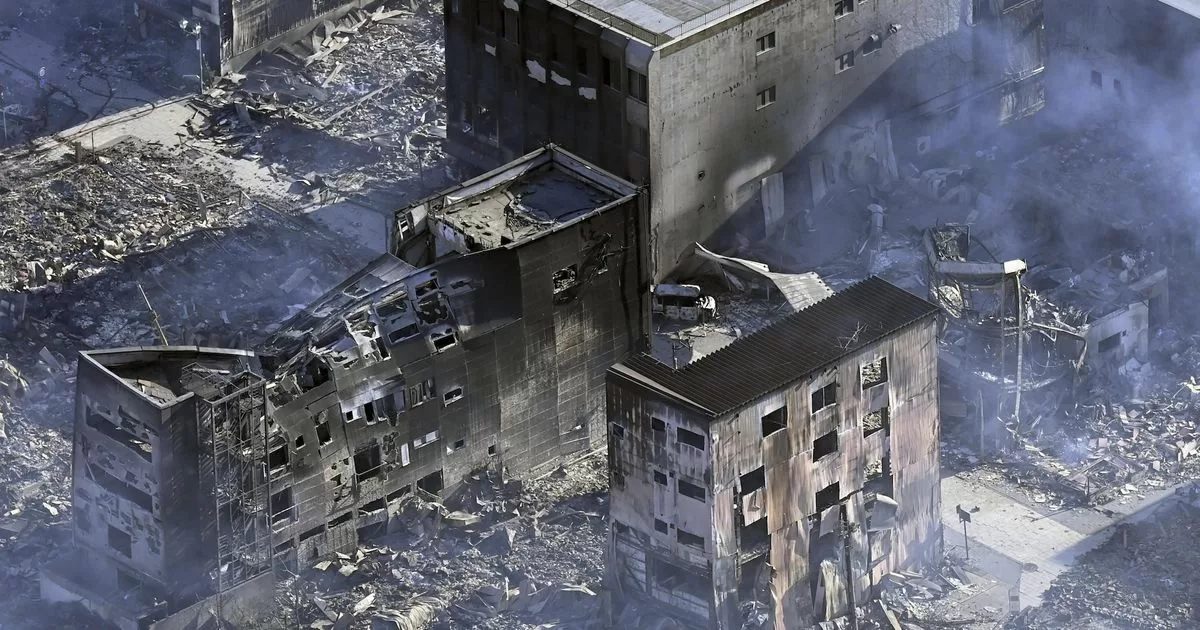WAJIMA, Japan — A series of strong earthquakes shook western Japan, killing at least 48 people and damaging thousands of buildings, vehicles and boats, and authorities on Tuesday warned residents in some areas to stay away from them. their homes in the face of the risk of more large-magnitude earthquakes.
Aftershocks continued to shake Ishikawa Prefecture and nearby areas a day after a 7.6 magnitude tremor struck the area on Monday afternoon.
48 people were confirmed dead in Ishikawa, according to officials. Another 16 were seriously injured, while the damage to homes was so severe that it could not be immediately quantified, they added.
Japanese media indicated that tens of thousands of homes were destroyed. Yoshimasa Hayashi, a government spokesman, said 17 people were seriously injured and gave a slightly lower death toll, while saying he was aware of the figure provided by the prefecture.
Water, electricity and cell phone services remained inoperative in some areas. Residents expressed sadness over their destroyed homes and uncertain future.
“It’s not just that it’s a disaster. The wall has collapsed, and it is possible to see into the next room. I don’t think we can continue living here,” Ishikawa resident Miki Kobayashi said as he toured his home.
His home was also damaged in a 2007 earthquake, he said.
The Japanese military sent a thousand soldiers to the disaster areas to join the rescue efforts, Prime Minister Fumio Kishida said.
“Saving lives is our priority and we are fighting a battle against time,” he declared. “It is crucial that people trapped in homes are rescued immediately.”
While he was speaking, another earthquake of preliminary magnitude 5.6 occurred in the Ishikawa area.
Firefighters managed to control a fire in the city of Wajima, which had reddened the sky with embers and smoke.
Nuclear industry regulators said several nuclear power plants in the region were operating normally. A strong earthquake and subsequent tsunami in March 2011 caused three reactors to melt down at a nuclear plant in northeastern Japan.
News videos showed rows of collapsed houses. Some wooden structures collapsed and cars were overturned. Half-sunken ships floated in bays where tsunami waves had entered.
On Monday, Japan’s meteorological agency issued a major tsunami warning for Ishikawa and smaller tsunami warnings for the rest of the western coast of Japan’s main island of Honshu, as well as the island from Hokkaido in the north.
Several hours later the warning was downgraded in magnitude, and by Tuesday morning all warnings were cancelled. Some places received waves greater than one meter (3 feet).
The agency warned that more major earthquakes could occur in the area in the coming days.
People who were evacuated from their homes took shelter in auditoriums, schools and community centers. The region’s bullet trains were halted, but service was being restored in some places. Sections of highways were closed.
Forecasters predicted rain, sparking fears over the state of buildings and infrastructure that are already crumbling.
Japan suffers frequent earthquakes due to its location on the Pacific Ring of Fire.
Source: AP

